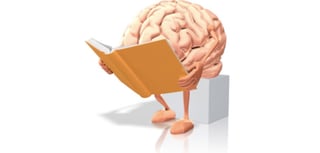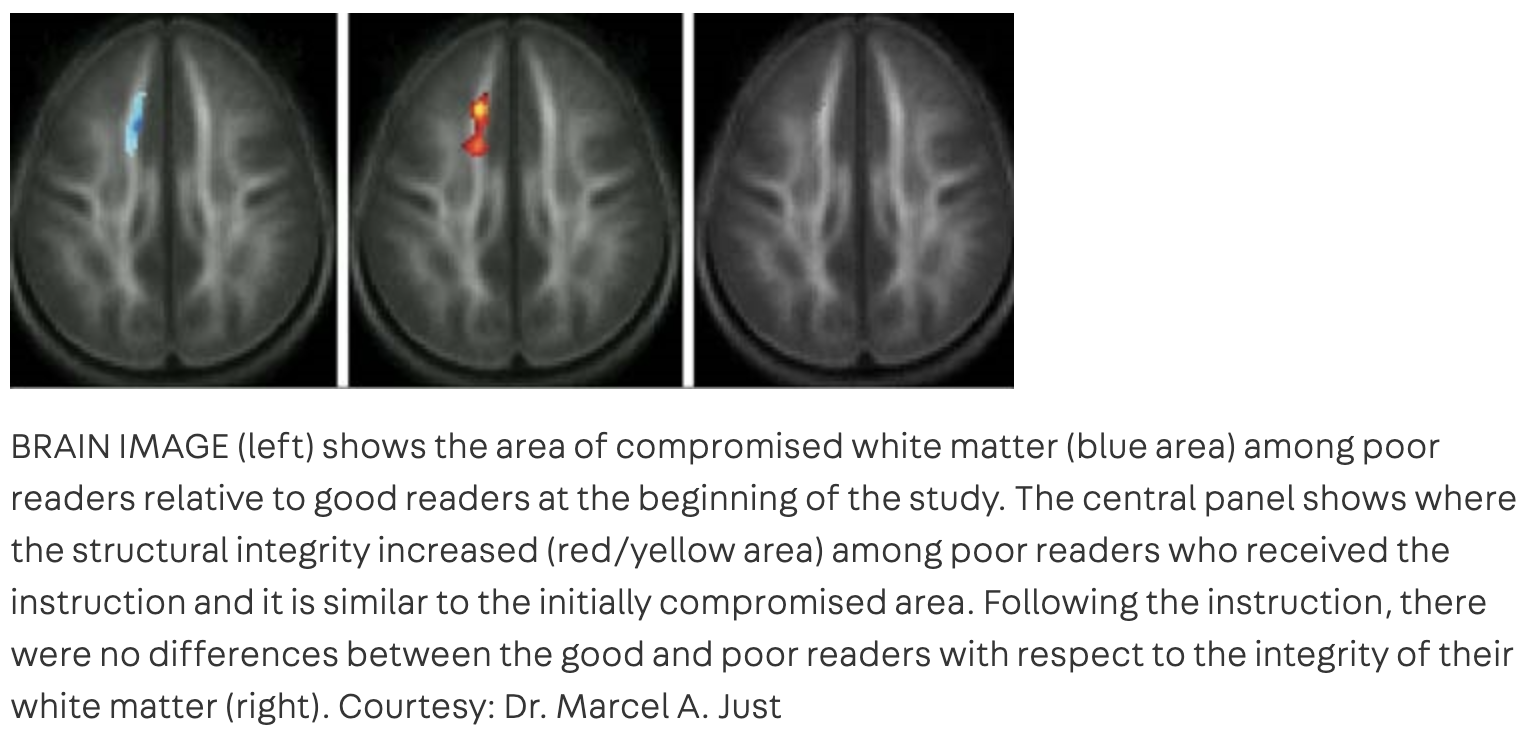
As humans, we rely on reading as an essential part of communication and knowledge acquisition. It’s a skill that we learn early in life and continue to develop throughout our lifetime. But have you ever stopped to think about how reading works and how it affects your brain? In this blog post, we will explore the neuroscience of reading and provide practical tips for implementing it effectively.
Understanding the Neuroscience of Reading
Reading is a complex process that involves the interaction of multiple brain regions. Research shows that the left hemisphere of the brain is primarily responsible for language processing, including reading. The visual cortex also plays a critical role in decoding the letters and words we see. As we read, our brain creates neural connections that strengthen with repeated use, making it easier and faster for us to recognize words and understand their meaning.
The Physiology of Reading
Here are some of the key topics to explore when considering the physiology of reading:
Brain Regions Involved in Reading
Several regions of the brain are involved in reading, including the visual cortex, which processes written language, and the Broca's and Wernicke's areas, which are responsible for language production and comprehension, respectively. When we read, these brain regions work together to help us process and understand written language.
Impact of Reading on Neural Connectivity
Reading has been shown to impact neural connectivity in the brain. Scientists from Carnegie Mellon in Pittsburgh, PA, found that the volume of white matter in an area of the brain that governs the use of language was increased following a six-month daily reading program (see results from the study). This increased connectivity can lead to improvements in cognitive function, including memory and attention.

Impact of Reading on Cognitive Development
Understanding the physiology of reading can help us better understand the impact that reading has on the brain and how we can use this knowledge to improve our reading skills.
Reading has a significant impact on cognitive development, particularly in children. Studies have shown that children who read regularly have better language skills, higher academic achievement, and increased social and emotional intelligence. This impact can be seen even in children who are not yet able to read independently but are read to regularly.
The Psychology of Reading
Reading not only affects our brains but also has a significant impact on our emotions and social skills. Studies show that reading helps develop empathy and improve social cognition, making us better equipped to understand others' emotions and perspectives. Additionally, reading can help with personal growth, providing a means of exploring new ideas and experiences.
Effective Reading Techniques
Now that we understand the neuroscience of reading, let's explore some practical tips for reading more efficiently and effectively.
Active Reading Strategies
Active reading is a technique that involves engaging with the text actively. This technique includes highlighting important information, taking notes, and summarizing the main points. Active reading can help improve retention and comprehension, especially when reading challenging material.
Speed Reading Techniques
Speed reading is a popular technique for reading faster while maintaining comprehension. However, it's essential to remember that speed reading isn't suitable for all types of reading material, and it's important to balance speed with comprehension. Different techniques for increasing reading speed include skimming, chunking, and eliminating subvocalization.
How to Improve Reading Comprehension
Improving reading comprehension is a crucial part of effective reading. Pre-reading strategies such as previewing and predicting can help prepare you for the material you're about to read. Post-reading strategies such as summarizing and synthesizing can help you review and retain the information you just read.
Pre-Reading Strategies
Pre-reading strategies are essential for preparing yourself to read and improving your reading comprehension. Here are some effective pre-reading strategies:
Previewing
Previewing involves scanning the text before you start reading to get a sense of what it's about. Look at the headings, subheadings, and any images or graphs. Previewing helps you activate your prior knowledge and focus your attention on what's most important.
Predicting
Predicting is a helpful strategy for actively engaging with the text before you start reading. Based on your preview, make predictions about what you think the text will cover. Predicting helps you set a purpose for reading and focus your attention on what's most relevant.
Setting Reading Goals
Setting reading goals is another effective pre-reading strategy. Before you start reading, ask yourself why you are reading the text and what you hope to gain from it. Setting goals helps you stay focused and engaged while you read and gives you a sense of accomplishment when you finish.
Note-taking
Note-taking is a helpful pre-reading strategy for academic texts or other complex material. Before you start reading, create a note-taking system that works for you, such as outlining, bullet points, or mind mapping. Note-taking helps you stay organized and engaged while you read and gives you a reference to review later.
By using these pre-reading strategies, you can prepare yourself to read more effectively and improve your reading comprehension.
Post-Reading Strategies
Post-reading strategies are essential for retaining what you've read and improving your reading comprehension. Here are some effective post-reading strategies:
Summarizing
Summarizing is a helpful post-reading strategy that involves restating the main ideas of a text in your own words. Summarizing helps you check your understanding and identify what's most important.
Synthesizing
Synthesizing is a post-reading strategy that involves connecting the information you've read to what you already know. Synthesizing helps you deepen your understanding and make new connections between different ideas.
Reviewing
Reviewing is a helpful post-reading strategy that involves going back over the text to check your understanding and reinforce what you've learned. Reviewing helps you identify any areas where you might be confused and gives you the opportunity to clarify your understanding.
Visualizing
Visualizing is a post-reading strategy that involves creating mental images of the information you've read. Visualizing helps you remember what you've read and makes it easier to recall the information later.
By using these post-reading strategies, you can retain what you've read more effectively and improve your reading comprehension.
Reading for Different Purposes
Different reading material requires different reading strategies. Academic reading involves critical thinking skills, note-taking, and proper citation. Professional reading requires a balance of skimming and critical thinking skills to extract essential information quickly.
Academic Reading Strategies
Reading academic texts can be challenging, but with the right strategies, you can read more effectively and improve your understanding. Here are some effective academic reading strategies:
Skimming
Skimming is a helpful strategy for getting an overview of an academic text. Start by reading the headings, subheadings, and any bold or italicized text. Skimming helps you identify the main ideas and the structure of the text before you dive into the details.
Scanning
Scanning is a strategy for quickly finding specific information in an academic text. Start by looking for keywords or phrases that relate to what you're looking for. Scanning helps you find the information you need without getting bogged down in irrelevant details.
Note-taking
Note-taking is an essential strategy for reading academic texts. As you read, take notes on the main ideas, key terms, and any questions or comments you have. Note-taking helps you stay engaged with the text and gives you a reference to review later.
Annotating
Annotating is a strategy for actively engaging with an academic text. As you read, underline or highlight important information and write notes or comments in the margins. Annotating helps you process the information and identify what's most important.
Citing Sources
Citing sources is an essential part of reading academic texts. Make sure to keep track of the sources you use and follow the citation style required by your professor or institution. Citing sources helps you give credit to the authors of the texts you use and avoid plagiarism.
By using these academic reading strategies, you can read more effectively and improve your understanding of complex texts.
Professional Reading Strategies
Reading professional documents, such as reports, memos, and emails, requires a different set of skills than reading academic texts. Here are some effective professional reading strategies:
Skimming
Skimming is a helpful strategy for getting an overview of a professional document. Start by reading the headings, subheadings, and any bold or italicized text. Skimming helps you identify the main ideas and the structure of the document before you dive into the details.
Scanning
Scanning is a strategy for quickly finding specific information in a professional document. Start by looking for keywords or phrases that relate to what you're looking for. Scanning helps you find the information you need without getting bogged down in irrelevant details.
Critical Thinking
Critical thinking is a skill that is essential for reading professional documents. As you read, ask yourself questions about the information presented, such as: Who is the intended audience? What is the purpose of this document? Are there any biases or assumptions present? Critical thinking helps you analyze the information and evaluate its relevance and credibility.
Applying the Information
Professional reading often requires you to apply the information you've read to real-world situations. As you read, think about how you can apply the information to your work or other contexts. Applying the information helps you deepen your understanding and make use of the information you've read.
By using these professional reading strategies, you can read more effectively and improve your understanding of a variety of professional documents.
Cultivating a Reading Habit
Finally, cultivating a reading habit is essential to improving your reading skills. Setting realistic reading goals, tracking your progress, and creating a reading-friendly environment can all help make reading a regular part of your life.
Setting Realistic Reading Goals

Setting reading goals can help you stay motivated and focused, and improve your reading habits. Here are some tips for setting realistic reading goals:
- Start with a clear purpose: Before setting a reading goal, consider your purpose for reading. Do you want to learn new information or skills? Do you want to read for pleasure or personal growth? Understanding your purpose will help you set a goal that is meaningful and achievable.
- Be specific: Set a specific goal, such as reading for a certain amount of time each day, or finishing a book by a certain date. A specific goal helps you stay focused and measure your progress.
- Make it measurable: Measure your progress by tracking how much you read or how long you read each day. This helps you stay accountable and motivated.
- Be realistic: Set a goal that is challenging but achievable. Don't set a goal that is too difficult or unrealistic, as this can lead to frustration and demotivation.
- Adjust as needed: Be flexible and adjust your goals as needed. If you find that your goal is too easy, increase the challenge. If you find that your goal is too difficult, adjust it to make it more achievable.
- Celebrate your progress: Celebrate your progress along the way. Recognize and reward yourself for achieving milestones, such as finishing a book or reaching a reading milestone.
By setting realistic reading goals, you can improve your reading habits and make reading a regular part of your life. Remember to start with a clear purpose, be specific and measurable, be realistic, and adjust your goals as needed.
Creating the Right Environment
Creating a reading-friendly environment is essential to cultivate a reading habit. Choosing a comfortable space is the first step toward creating such an environment. Find a space that is quiet, well-lit, and free from distractions. It could be a cozy corner in your house, a park bench, or a quiet café. Make sure that the space is comfortable enough for you to sit for extended periods without feeling uncomfortable.
Additionally, avoid reading in spaces that you associate with other activities, such as your bed or workspace. This helps create a mental separation between reading time and other activities.
Another aspect of creating the right environment is avoiding distractions. Turn off your phone or put it on silent mode, and avoid checking social media or email while reading. If you're easily distracted by noise, consider using noise-canceling headphones or playing some calming music to block out distractions.
Finally, make sure you have the necessary materials available, such as a comfortable chair or cushion, good lighting, and any necessary reading materials. By creating a comfortable, distraction-free space, you can make reading a pleasurable and relaxing experience, and encourage yourself to read more often.
Conclusion
In conclusion, unlocking the neuroscience of reading and implementing effective reading strategies is essential for personal and professional growth. By understanding the physiology and psychology of reading, discovering effective reading techniques, and cultivating a reading habit, you can enhance your cognitive development, empathy, and social skills. By using pre-reading and post-reading strategies, reading for different purposes, and creating the right environment for reading, you can improve your reading comprehension and retention.
Remember, reading is a lifelong process that requires practice and dedication. Setting realistic reading goals and tracking your progress can help you stay motivated and make reading a regular part of your life. Whether you're a student, a professional, or someone who loves reading, these strategies can help you get the most out of your reading experience. So go ahead, pick up a book, and unlock the magic of reading!
